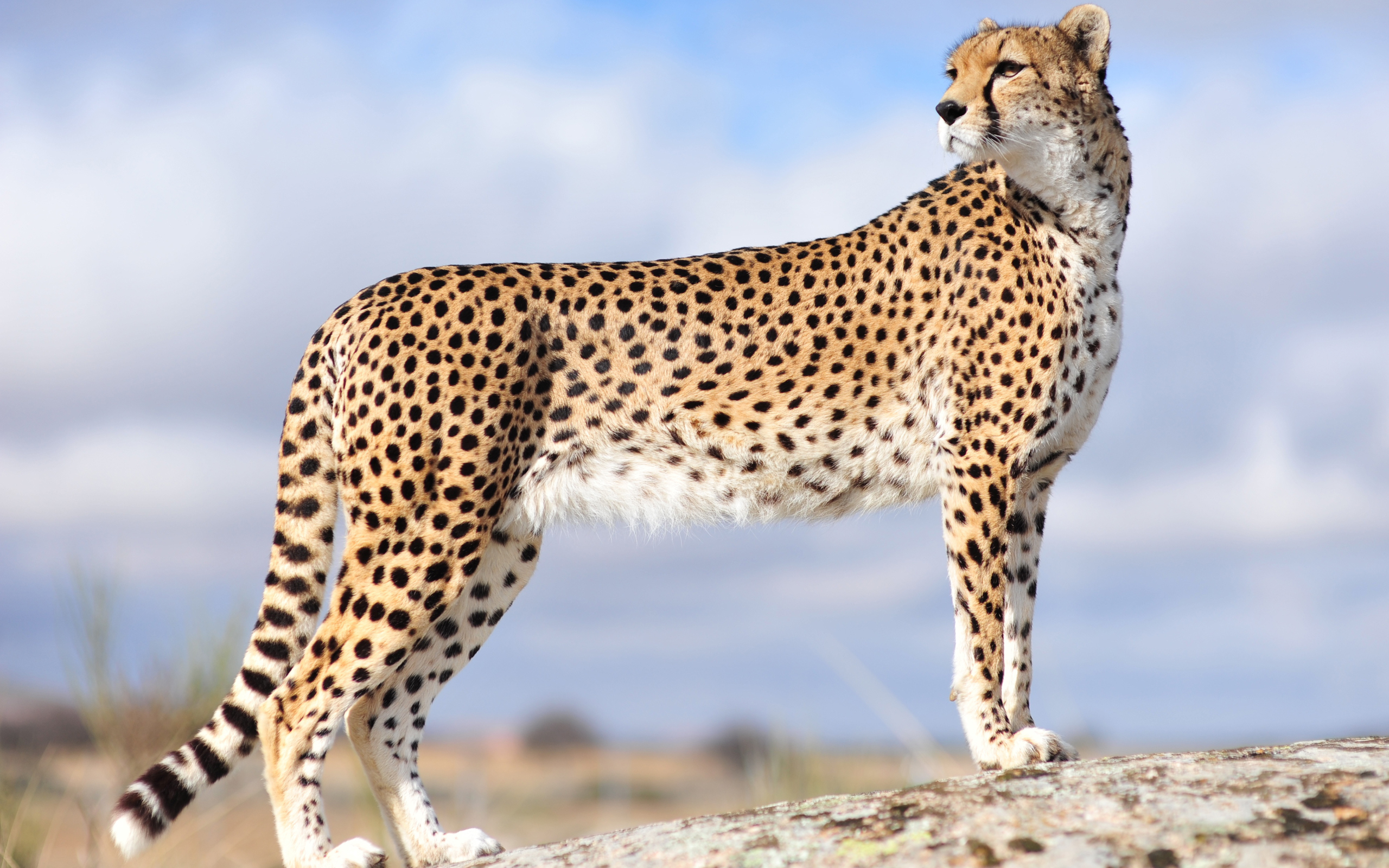

This in turn comes from Sanskrit: चित्रय ( Chitra-ya) meaning 'variegated', 'adorned' or 'painted'. The vernacular name "cheetah" is derived from Hindustani Urdu: چیتا and Hindi: चीता ( ćītā). They have been widely depicted in art, literature, advertising, and animation. In the past, cheetahs were tamed and trained for hunting ungulates. In 2016, the global cheetah population was estimated at 7,100 individuals in the wild it is listed as Vulnerable on the IUCN Red List. Historically ranging throughout most of Sub-Saharan Africa and extending eastward into the Middle East and to central India, the cheetah is now distributed mainly in small, fragmented populations in central Iran and southern, eastern and northwestern Africa. The cheetah is threatened by several factors such as habitat loss, conflict with humans, poaching and high susceptibility to diseases. The cheetah occurs in a variety of habitats such as savannahs in the Serengeti, arid mountain ranges in the Sahara and hilly desert terrain in Iran. They are weaned at around four months and are independent by around 20 months of age. Cheetah cubs are highly vulnerable to predation by other large carnivores such as hyenas and lions. After a gestation of nearly three months, a litter of typically three or four cubs is born. The cheetah typically stalks its prey to within 60–70 m (200–230 ft), charges towards it, trips it during the chase and bites its throat to suffocate it to death. It feeds on small- to medium-sized prey, mostly weighing under 40 kg (88 lb), and prefers medium-sized ungulates such as impala, springbok and Thomson's gazelles. The cheetah is active during the day, with peaks during dawn and dusk. While females lead a nomadic life searching for prey in large home ranges, males are more sedentary and instead establish much smaller territories in areas with plentiful prey and access to females. The cheetah lives in three main social groups: females and their cubs, male "coalitions", and solitary males. The coat is typically tawny to creamy white or pale buff and is mostly covered with evenly spaced, solid black spots. Its head is small and rounded, with a short snout and black tear-like facial streaks. Adults weigh between 21 and 72 kg (46 and 159 lb). It typically reaches 67–94 cm (26–37 in) at the shoulder, and the head-and-body length is between 1.1 and 1.5 m (3 ft 7 in and 4 ft 11 in). It is the fastest land animal, estimated to be capable of running at 80 to 128 km/h (50 to 80 mph) with the fastest reliably recorded speeds being 93 and 98 km/h (58 and 61 mph), and as such has several adaptations for speed, including a light build, long thin legs and a long tail. The cheetah ( Acinonyx jubatus) is a large cat native to Africa and central Iran. Cynailurus soemmeringii Fitzinger, 1855.As the Ukrainian Gepards deploy, that number could rise. The Russian air force already has lost 16 of its roughly 200 Su-25s in five months of hard fighting in Ukraine. “It's a ‘golden oldie,'” Nicholas Drummond, a British tank consultant, tweeted in reference to the SPAAG. But so are the aircraft they’re meant to destroy. So it was a big deal when, in April, Berlin offered Gepards to Kyiv. Moreso because Russian doctrine, and the Russian military’s shortage of precision weapons, compels attack pilots to fly very close to enemy forces in order to employ unguided rockets and bombs. The three-person crew is cued by a turret-mounted radar with a nine-mile range. Its twin Oerlikon cannons fire 550 rounds a minute out to a range of three miles. That both slows down his battalion and puts him in the line of fire.Ī Gepard by contrast is mobile and protected, as it combines the basic chassis of a Leopard tank with a lightly-armored turret. But he has to jump out of his vehicle to shoot a missile. It’s not for no reason that, when Kyiv went to its Western allies with a list of weapons it needed, shoulder-fired surface-to-air missiles were near the top.Ī soldier hauling a 35-pound Stinger SAM is mobile in the sense that he can ride along with the front-line forces. The Ukrainian army initially lacked adequate air-defenses against low- and close-flying aircraft. When the Russian army widened its war in Ukraine starting in late February, the same old gunships and Su-25s flew overhead.


 0 kommentar(er)
0 kommentar(er)
